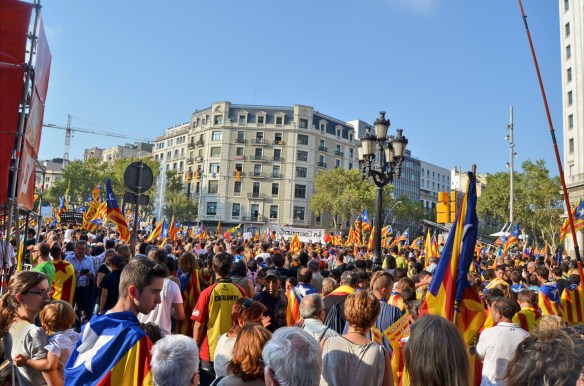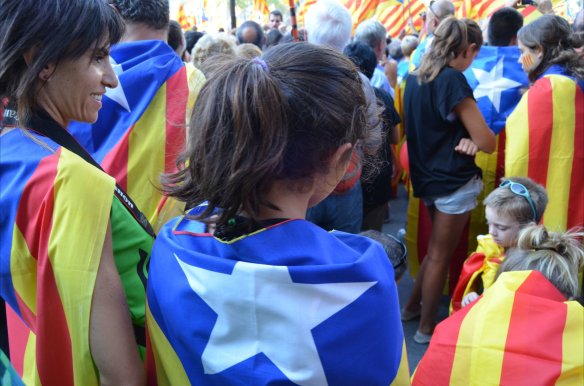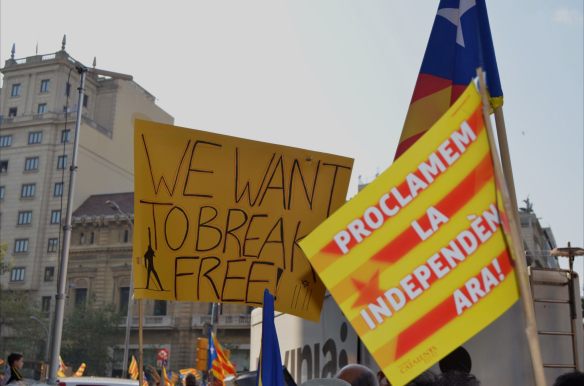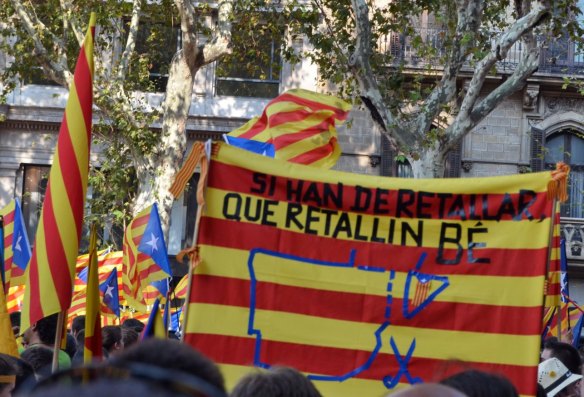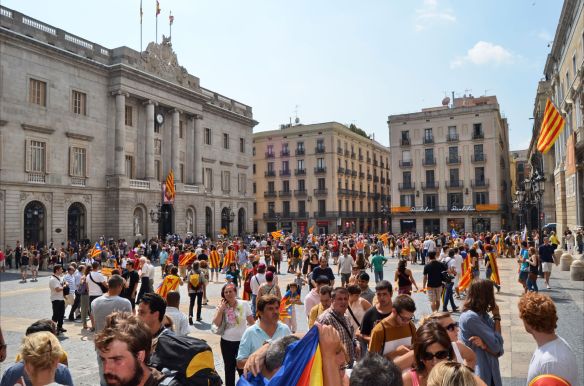For those of you, like me, that couldn’t attend the march in Barcelona, here’s a first hand account to help paint the picture. As Carles states, I believe the images speak for themselves. Many thanks to a wonderful friend, fantastic writer, history expert, Catalan teacher, and of course great photo journalist. Enjoy!
Plaza Catalunya, March for Independence
“Hi, my name is Carles, I am Catalan, I live near Barcelona. Tuesday I attended the big march for Catalan independence, so that we can separate from Spain. Why? Well, both countries have very different situations, yes, they share common bonds, but some of them are incredibly negative for Catalonia. We are a nation and we want to follow our own path as a new European state. There are powerful historical reasons, politic reasons, and cultural reasons. But I’ll leave this wider issue for another moment, for now I just want to emphasize the spirit of our National party and this associated march for independence. As a Catalan citizen in favor of our independence, we enjoyed a great celebration, very friendly and familiar. Whole families with fathers, mothers, children and relatives were there all together in hopes of realizing this common goal. I think that the easiest way to understand this fact is to look at the images from the event. Media sources around the entire world have shown this act. Thanks.” -Carles
If they must make cuts, they should cut well.
Barcelona’s Town hall
(All images belong to Carles Molano Mascoso)

